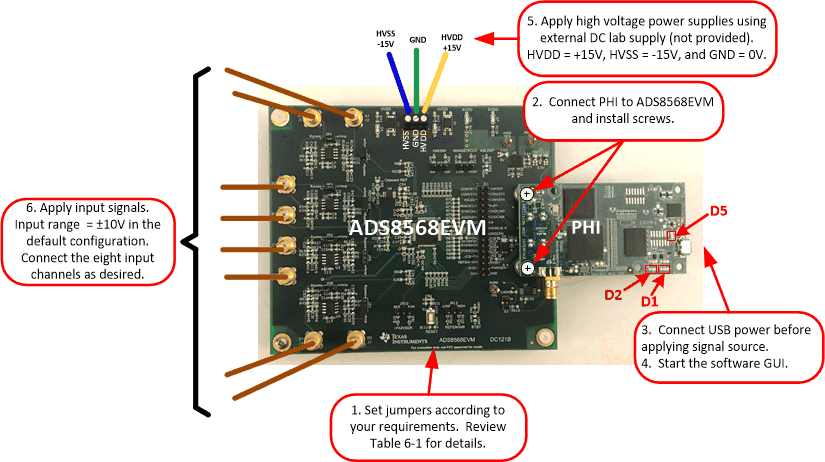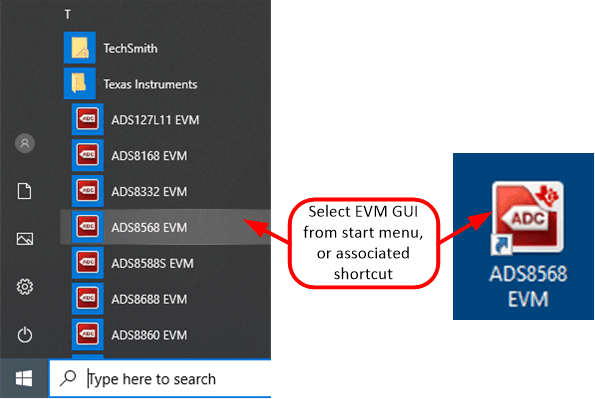SBAU193E June 2011 – May 2021 ADS8568
6.1 Connecting the Hardware and Running the GUI
- Set the jumpers according to Table 6-1.
- Physically connect P2 of the PHI to J10 of the ADS8568EVM. Install the screws to assure a robust connection.
- Connect USB on PHI to the computer
first.
- LED D5 on the PHI lights up, indicating that the PHI is powered up.
- LEDs D1 and D2 on the PHI start blinking to indicate that the PHI is booted up and communicating with the PC; Figure 6-1 shows the resulting LED indicators.
- Start the software GUI as shown in Figure 6-2. You will notice that the LEDs blink slowly as the FPGA firmware is loaded on the PHI. This will take a few seconds then the AVDD and DVDD power supplies will turn on.
- Connect the high voltage power supplies (HVDD = +15 V, HVSS = -15 V, and GND).
- Connect the signal generator. The default input range is ±10 V (or 10Vpk). A common input signal applied is a sinusoidal 1kHz, 9.9Vpk signal with a 0 V offset. Note that this signal is adjusted just below the full scale range to avoid clipping.
 Figure 6-1 ADS8568EVM Hardware Setup and LED
Indicators
Figure 6-1 ADS8568EVM Hardware Setup and LED
IndicatorsFigure 6-2 shows how the software can be started on the start menu or using a desktop icon.
 Figure 6-2 Launch the EVM GUI Software
Figure 6-2 Launch the EVM GUI Software